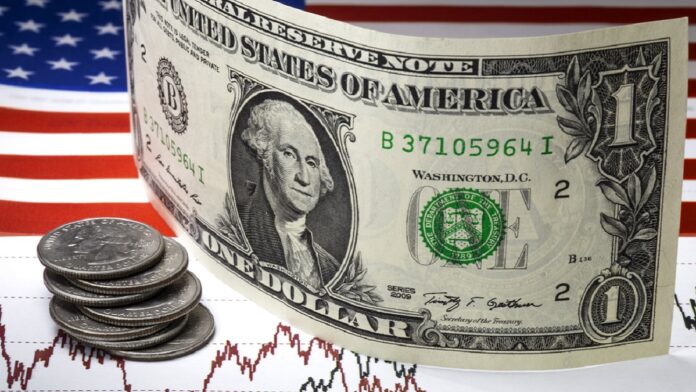Dollar Lower as China, Korea U.S Treasury Holdings Dip
The United States (US) dollar was lower against its major trading partners early Wednesday, apart from a partial recovery against the yen. The dollar has been under underperforming other developed markets currencies lately due to pressures on the US economy.
DXY is currently around 2% off its highs of the year and should probably stay supported around these levels as the Fed pushback continues. China and Korea reduce their U.S Treasury bill holdings. Meanwhile, markets and analysts are on alert for signs of a further economic slowdown after a second consecutive quarterly contraction in GDP was reported last week, ING Economics said in a note on Wednesday.
With an expectation of Friday’s July employment report, some expect that the Federal Open Market Committee will need to slow its pace of tightening and perhaps consider easing next year in the face of a recession.
A quick summary of foreign exchange activity heading into Wednesday shows that USDEUR rose to 1.0188 from 1.0166 at the Tuesday US close but was still well below the 1.0227 level at the same point Tuesday morning. EU producer prices were stronger than expected in June according to data released overnight, while retail sales fell sharply.
The EU services PMI fell to a six-month low in July as the post-COVID-19 boost dissipated, with declines in the regional readings for Spain, France, Italy, and Germany. The next European Central Bank meeting is scheduled for Sept. 9. GBPUSD ticked up slightly to 1.2191 from 1.2162 at the Tuesday US close but remained below the 1.2205 level at the same point Tuesday morning.
UK services PMI hit a 17-month low in July according to data released earlier Wednesday. The Bank of England is expected to continue its tightening cycle with a 50 basis point increase at its meeting Thursday. USDJPY partially recovered from its recent slide due to higher yields, rising to 133.2782 from 133.1543 at the Tuesday US close and 130.9675 at the same time Tuesday morning.
Japanese services PMI hit a three-month low in July according to data released overnight. Even with inflation rising, the Bank of Japan is expected to maintain its accommodative monetary policy stance at its next meeting on Sept. 21-22.
USDCAD slipped to 1.2855 from 1.2878 at the Tuesday US close and 1.2863 at the same time Tuesday morning. There are no Canadian data on Wednesday’s schedule. The Bank of Canada’s monetary policy committee meets next on Sept. 7.
U.S House Speaker Nancy Pelosi’s visit to Taiwan has triggered the expected ire of Chinese authorities. These have responded with new restrictions on sand exports to Taiwan (to target the construction sector) and also an extension of some bans on fruit exports.
Chinese live-fire military drills have been announced for 4-7 August – measures that will keep financial markets on edge. For the time being, however, investors have taken the Pelosi visit in their stride and Asian equity markets are tracing small gains.
Suggestions that China could be weaponising its US Treasury holdings on the back of Taiwan alone look wide of the mark. We say this because there are many other factors driving the Chinese decline in US Treasury holdings and several factors driving the US Treasury sell-off overnight.
From the Chinese side, true holdings of US Treasuries have dropped to $980 billion in May from $1.08 trillion late last year. Yet this looks more likely a function of Chinese FX intervention to keep USD/CNY stable in a strong dollar environment. READ: Bonds Yields Dip as CBN Rate on 364-Day T-Bills Rises
After all, Korea’s US Treasury holdings have fallen from $132 billion to $114 billion over the same period too. And a further decline in China’s US Treasury holdings looks likely as geopolitical spheres of influence sharpen after Russia’s invasion of Ukraine and the seizure of Russian FX reserves, ING Economics said in a note.
From the US Treasury side, last night’s sell-off looks more related to a raft of comments from Fed speakers that it was ‘nowhere near done when it comes to tightening. DXY is currently around 2% off its highs of the year and should probably stay supported around these levels as the Fed pushback continues. # Dollar Lower as China, Korea U.S Treasury Holdings Dip












